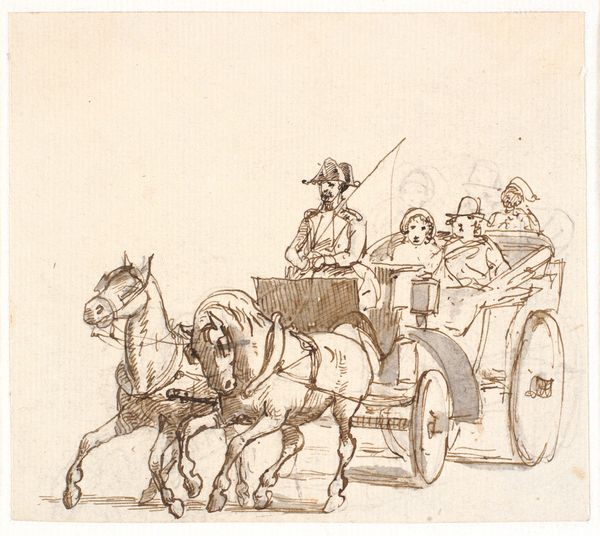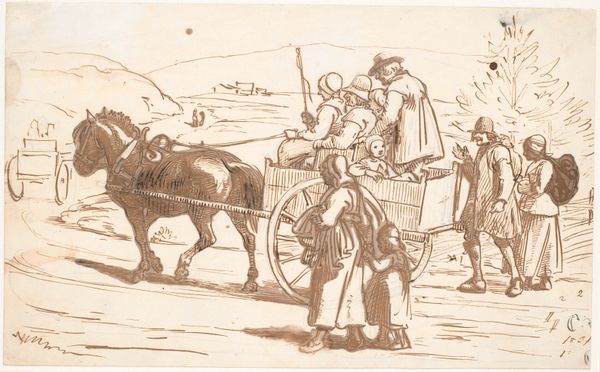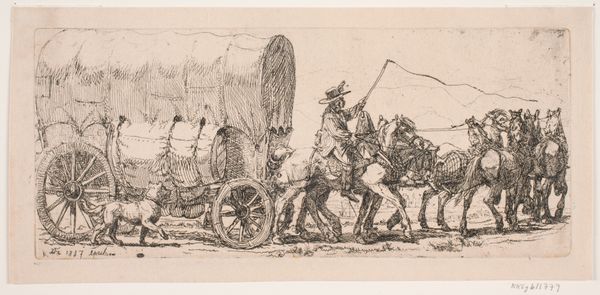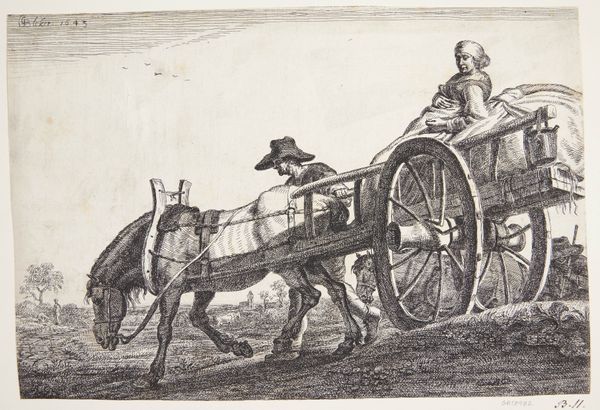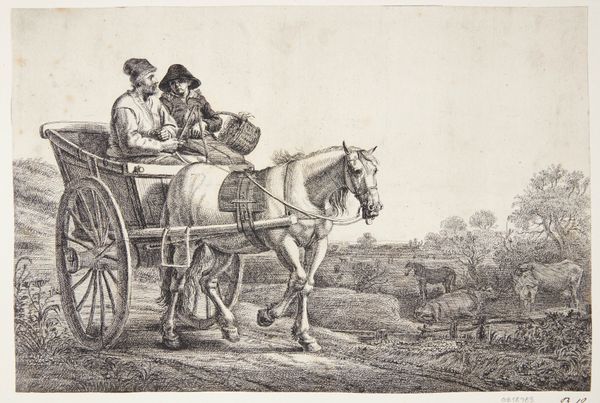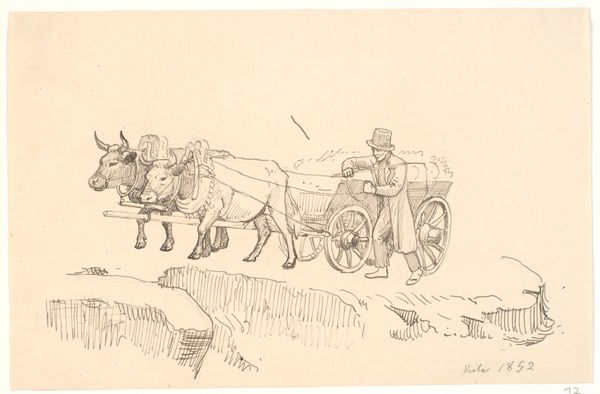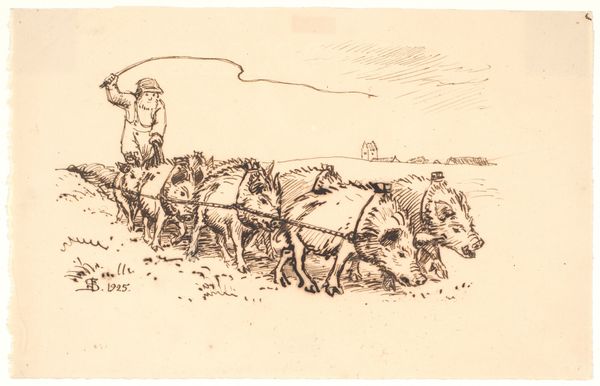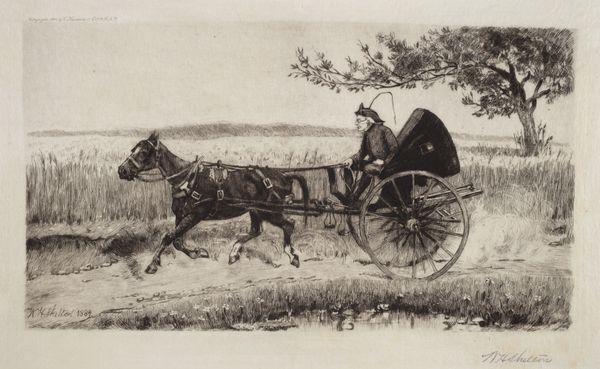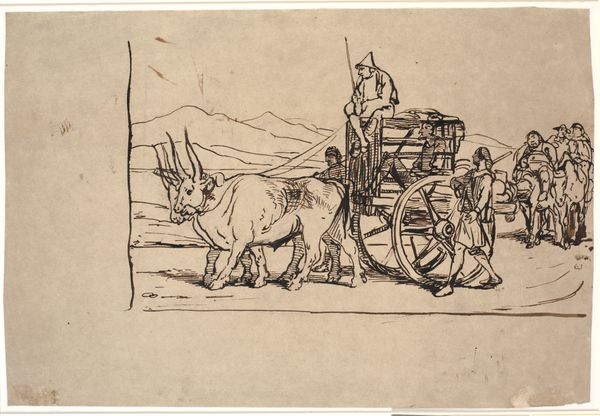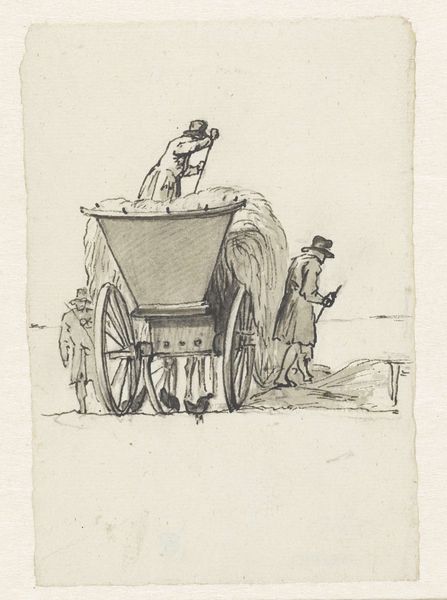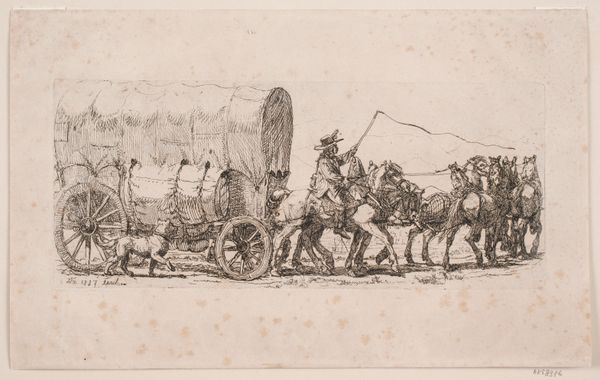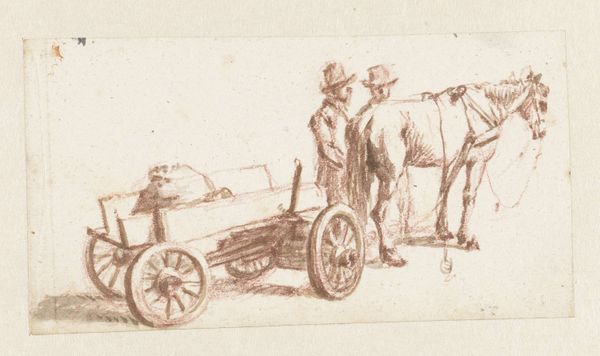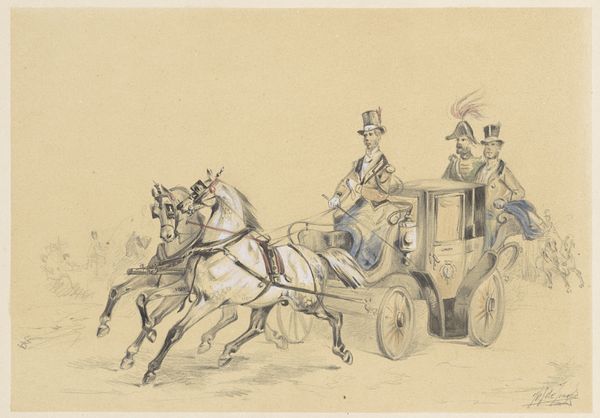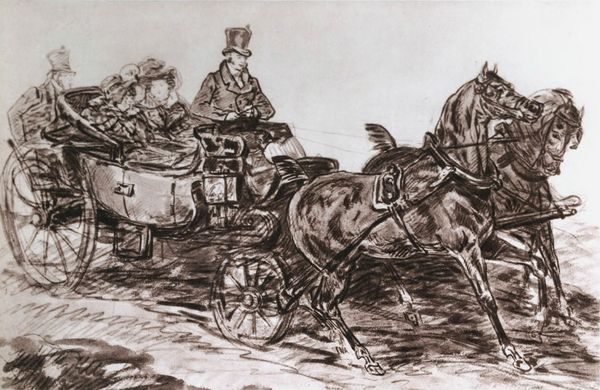
Dimensions: 180 mm (height) x 229 mm (width) (bladmaal)
Editor: Here we have Wilhelm Marstrand’s “På skovtur,” a pen and ink drawing from the 1850s. There's a lovely looseness to the sketch that captures a sense of breezy, outdoor travel. What stands out to you about this piece? Curator: What I find particularly fascinating is the way Marstrand situates this scene within a burgeoning Danish national identity. In the 1850s, there was an increasing emphasis on defining what it meant to be Danish. Genre scenes like this, depicting middle-class figures on leisure outings, played a role in shaping those ideals and constructing a public image. Editor: So it's not just a pleasant day trip, but a statement? Curator: Precisely. Consider the figures themselves. They appear prosperous and respectable, embodying the values of the rising bourgeoisie. Think about the burgeoning ideas around tourism in this period. The "skovtur", the trip to the woods, becomes almost a patriotic act. Are they connecting with nature or showing off wealth? Editor: Interesting, because I initially saw it as simply a casual scene. How would the museum setting itself have impacted its reception? Curator: Museums, like the Statens Museum for Kunst, were key players. By displaying works like this, they reinforced these national narratives and promoted particular social values, shaping public taste. This idealized portrayal may also elide other truths, namely labor divisions in a deeply class-based society. Who drives the horses and where do they rest? Editor: That completely changes how I see it. So much more is going on beneath the surface. Thanks! Curator: Indeed, understanding the historical context unveils layers of meaning that enrich our appreciation. It invites us to question whose story is being told.
Comments
No comments
Be the first to comment and join the conversation on the ultimate creative platform.
